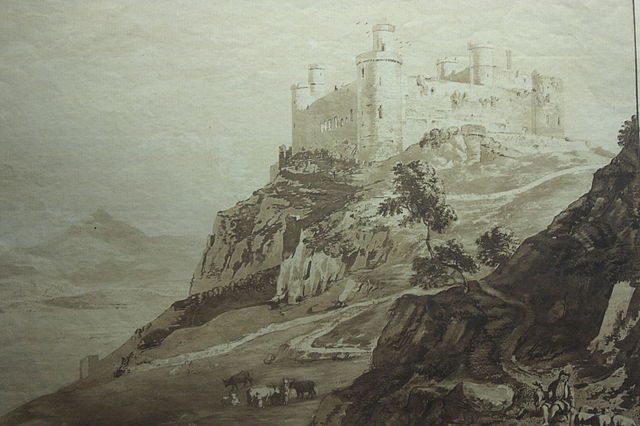
Simple water color kits for kids can be found at dollar and drug stores, and we’d be remiss to forget that paint-by-numbers exist. And, to be fair, it’s been around since the days of ancient Egypt. But watercolors the way we know them- dreamy, scenic landscapes- only became popular in the late 1700s. The transformation is thanks to one man: Paul Sandby.
Baptized in 1731*, Sandby and his brother Thomas grew up in Nottingham. They moved to London in 1745 and gained employment with the military. It was there he worked with the drawing department at the Tower of London, eventually becoming the draughtsman of new roads and bridges to forts. As a hobby away from his designing, he began painting the Scottish countryside to depict its change since the Jacobite rebellion.
Eventually, he left the military, instead opting to join Thomas once more. Paul would assist his brother in his job at Windsor Great Park by sketching the castle and the surrounding town. Sir Joseph Banks purchased these drawings, and Sandby’s talent was recognized by the public at large for the first time.
While still some ways off from his title of the “the father of modern landscape painting in watercolors,” as his obituaries described him, he was beginning to gain a following. Thomas Gainsborough, a premiere portraitist, said to seek Sandby out if one wanted “real Views from Nature in this Country” [sic]. He was among the artists featured in the first exhibition of the Society in Artists in 1760. Eight years later, he was made the chief drawing master at the Royal Military Academy. He passed away in 1809.

During his lifetime, Sandby was renowned for his drawings and paintings. After being commissioned by Banks (the same man who bought his first drawings), he traveled through Wales and chronicled the sights in this art form. The resulting book was a major success, with three more versions of twelve prints each to be published.
Even now, he continues to be revered. His paintings are frequently part of tours across both the UK and the US. Said Dave Trimble of the Nottingham City Culture, “the kind of landscape Sandby painted is so familiar to us today it is hard to realize how innovative it was when it was first created, collected, and exhibited.” He told Culture24 that “Sandby took the topographical scene and developed into an art.”
The New York Times dedicated a complete article to his backstory when a show dedicated to him opened in 2010. The piece describes him as an enigma, thanks to the mystery of how the watercolor scene emerged in the 18th century. Souren Melikian, the author of the article, goes on to commend “his aptitude at observation” and his “poetic, highly sensitive response to nature.” It’s the glowing praise from today that echoes initial responses and prove the longevity of Sandby’s work.

Whether you agree is up to personal opinion, but it’s hard to deny Sandby’s influence. Painting landscapes with watercolors is extremely common nowadays; it’s so ordinary that it can be difficult to visualize how groundbreaking it was at the time. Sandby was by no means the first person to use watercolors as an art medium. But his title as the father of the English version of the art form is well-deserved. Artists like Andrew Wyeth, Thomas Moran, and even Vincent Van Gogh owe a lot to Paul Sandby. It’s time to pick up a brush (or pen) and immortalize the view outside your window. Sandby would no doubt approve.
*Exact birth date unknown, but theorized to be in 1925.
Follow our World of Creation on Instagram, where “what if” becomes “what is.”







